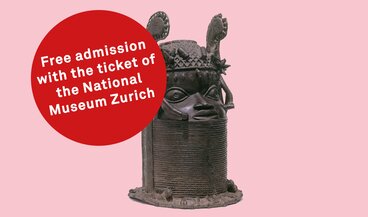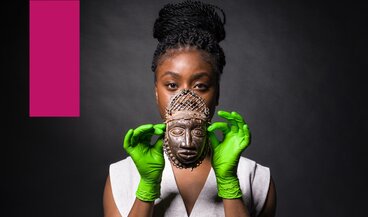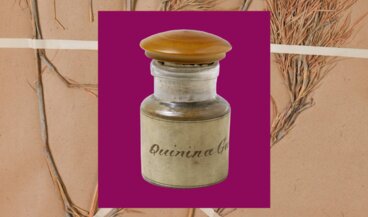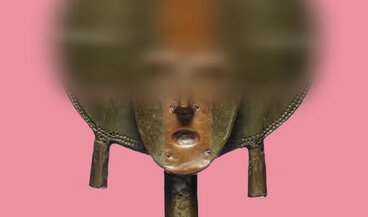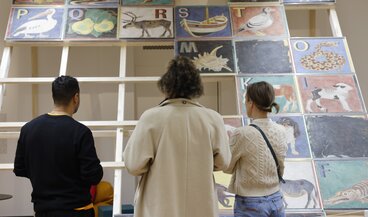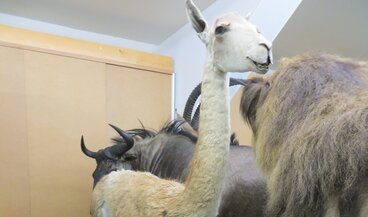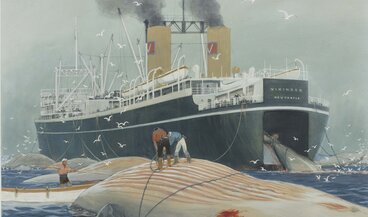accessibility.sr-only.body-term
Swiss citizens and companies were heavily involved in the colonial system from the 16th century onwards. Some Swiss companies and private individuals took part in the transatlantic slave trade and earned a fortune from the trade in colonial goods and exploitation of slave labour. Swiss men and women travelled the globe as missionaries. Other Swiss, driven by poverty or a thirst for adventure, served as mercenaries in European armies sent to conquer colonial territory or crush uprisings by the indigenous population. Swiss experts also placed their knowledge at the disposal of the colonial powers. And the racial theories prevalent at the time, which were used to justify the colonial system, formed part of the curriculum at the universities of Zurich and Geneva.
The exhibition at the National Museum Zurich draws on the latest research findings and uses concrete examples, illustrated with objects, works of art, photographs and documents, to present the first-ever comprehensive overview of Switzerland's history of colonial entanglement. And by drawing parallels to contemporary issues, it also explores the question of what this colonial heritage means for present-day Switzerland.
The exhibition will be on display in an adapted form at the Château de Prangins from 27 March 2026 to 11 October 2026.
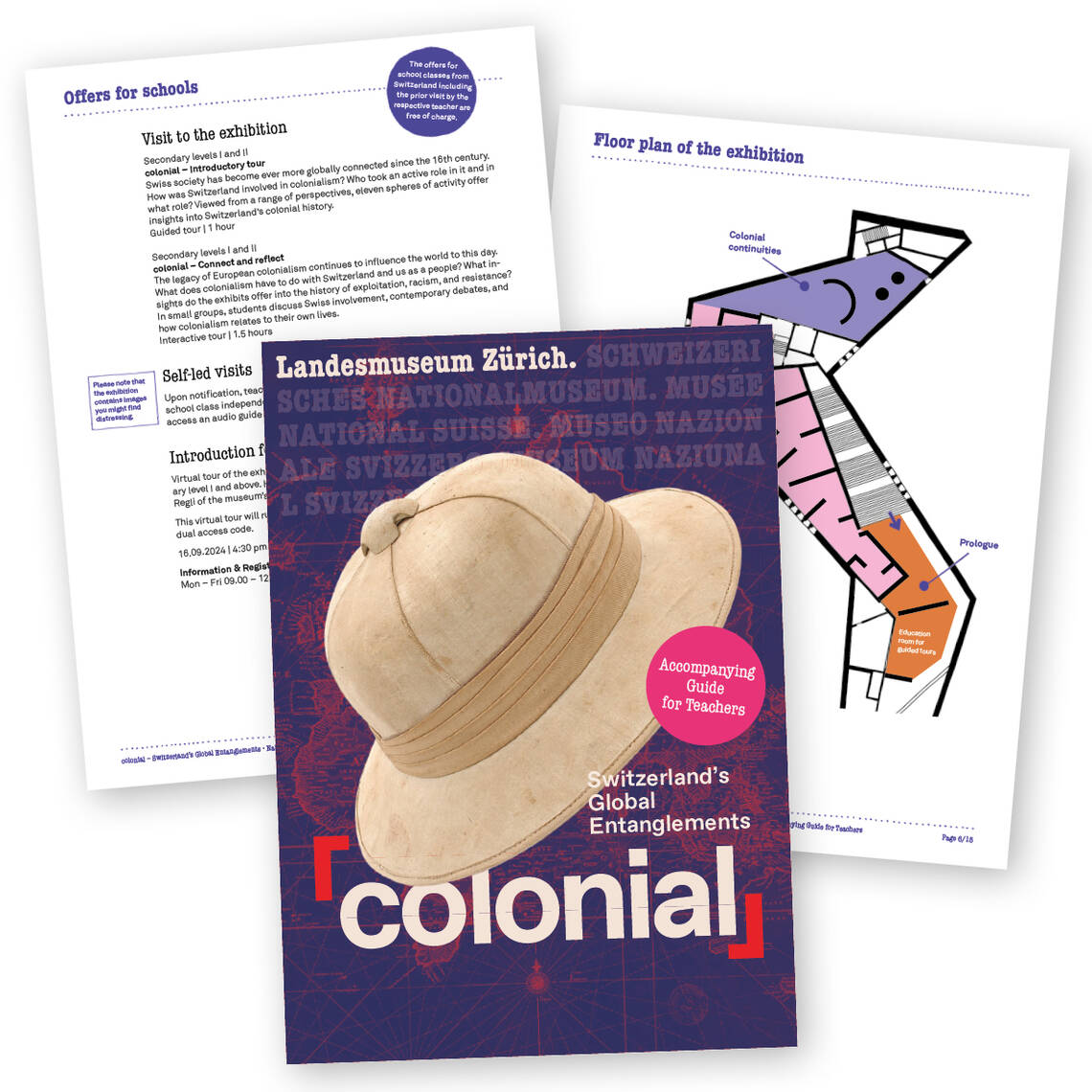
Teaching materials
Available to download once the exhibition opens, the pedagogical commentary for teachers will offer insight into the exhibition and suggestions on how to approach the subject in the classroom.
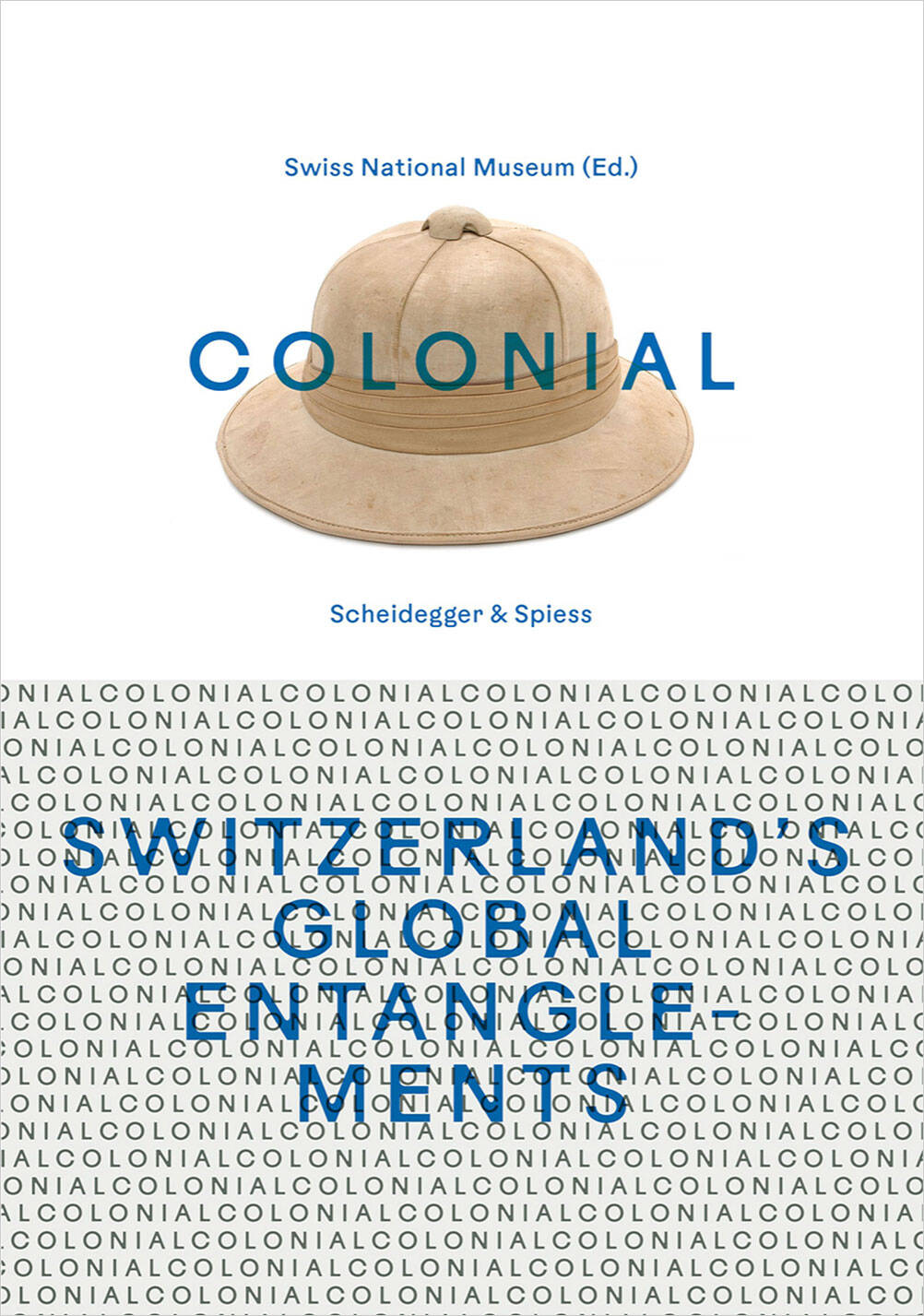
colonial – Switzerland’s Global Entanglements
Switzerland has been globally connected and entangled with colonies established by the seafaring European nations in Africa, the Americas, and Asia since the 16th century. colonial—Switzerland’s Global Entanglements offers a timely overview of this highly topical matter, placing a wide range of aspects in historical context and addressing as well questions of colonial continuities.
Contributions by distinguished scholars and experts from various disciplines investigate questions such as the involvement of Swiss companies in the trade with enslaved people, Swiss mercenaries in the service of colonial powers, the colonial legacy of the country’s missionary societies, and the research and collection of artefacts by Swiss scientists in former colonies. Light is shed also on the involvement of anthropological institutes at the universities of Zurich and Geneva in scientific racism.
Conceived as an illustrated reader, this volume is both an invitation and a stimulus to explore and to engage critically with Switzerland’s history of global interdependence.
Paperback
284 pages, 49 color and 12 b/w illustrations
16 x 23 cm
664 g
ISBN 978-3-03942-211-1
colonial – Switzerland’s Global Entanglements
The National Museum Zurich is presenting its first ever comprehensive and multi-perspectival overview of Switzerland’s colonial past. It takes the form of an exhibition based on the latest research, and draws on biographies as well as using objects, artworks, photographs and written documents for illustration.
The exhibition comprises two parts. The first part defines eleven themes, with many examples of how Swiss people, businesses and communities were involved in colonialism from the 16th century. The geographical scope covers North and South America through Africa to Asia. A number of Swiss companies and private individuals participated in the transatlantic slave trade and amassed a fortune from trading in colonial products and exploiting enslaved people. Swiss missionaries travelled the world and left Switzerland to found settlement colonies and cultivate supposedly unpopulated land. Others, driven by poverty or a thirst for adventure, served as mercenaries in European armies, undertook colonial conquests and crushed uprisings by indigenous populations. Back home, science played its part in shaping the perception of people in the colonies, in addition to the letters and reports sent from colonial lands. Scientists at the universities of Zurich and Geneva formulated race theories that gained international credence and helped legitimise the colonial system.
The second part of the exhibition addresses the legacy of colonialism and its impact on present-day Switzerland. It reveals the effects of colonialism that still persist – such as global wealth inequality and environmental issues. The main emphasis, however, is on debates of direct relevance to the Swiss people: for example, should street names or monuments to people who were involved in colonialism be altered or knocked down or is that erasing history? Visitors are invited to join the discussion and leave their thoughts at the exhibition.
Researchers from different disciplines have released publications on Switzerland’s colonial entanglements in recent years. Museums have also recognised the significance of the issue, as shown in the exhibitions on display this autumn, for example.
The exhibition at the National Museum Zurich is the first to offer featuring a multi-thematic overview of Switzerland’s history of colonial entanglement. It features numerous voices and considers the issue from the perspective of different regions, action areas and positions. Contributions from artists including Denise Bertschi, Sasha Huber, Chris Pappan, Mathias C. Pfund, Deneth Piumakshi Veda Arachchige and Dom Smaz add valuable insights. The exhibition also incorporates extracts from exchanges with the public and with various experts and actors. An international scientific advisory board oversaw the conceptualisation.
Besides a comprehensive educational programme for schools created with historian Ashkira Darman, the exhibition offers an extensive supporting programme with interactive tours, meetings, panel discussions and focus events in cooperation with ETH Zurich and the Historical Dictionary of Switzerland.
The exhibition will be on display in an adapted form at the Château de Prangins from 27 March to 11 October 2026.
Documents
Images
National Museum Zurich press contact
Numerous other exhibitions are organised on the subject of colonialism.
The exhibition "colonial – Switzerland’s Global Entanglements" will be on display in an adapted form at the Château de Prangins from 27 March 2026 to 11 October 2026.
- Overall management Denise Tonella
- Curators and Concept Marina Amstad, Pascale Meyer, Raphael Schwere, Marilyn Umurungi
- Project direction Marina Amstad
- Curatorial Support Heidi Amrein
- Scenography Alex Harb
- Exhibition graphic Selina Locher
- Project coordination Sophie Dänzer
- Scientific advisor Bernhard Carlos Schär
- Scientific Advisory Board Carine Ayélé Durand, Jose Cáceres Mardones, Noémie Étienne, Kwamou Eva Feukeu, Rohit Jain, Georg Kreis, Cassandra Mark-Thiesen, Patricia Purtschert, Anna Schmid, Esther Tisa Francini, Sacha Zala, Roberto Zaugg
- Advisory committee Roman Aebersold, Günhan Akarçay, Heidi Amrein, Beat Högger, Markus Leuthard, Sabrina Médioni, Denise Tonella
- Project controlling Sabrina Médioni
- Cultural services and museum education Ashkira Darmann, Lisa Engi, Vera Humbel
- Technical management Mike Zaugg, Ladina Fait
- Exhibition construction Ira Allemann, Marc Hägeli, Philippe Leuthardt, Sophie Lühr, Julia Rusterholz, Dave Schwitter
- Conservation management Nikkibarla Calonder, Ulrike Rothenhäusler
- Conservation and mounting of objects Nikkibarla Calonder, Natalie Ellwanger, Anna Jurt, Véronique Mathieu, Jürg Mathys, Gaby Petrak, Ulrike Rothenhäusler, Tino Zagermann, Christian Alder
- Logistics of objects and montage of objects David Blazquez, Christian Affentranger, Simon D'Hollosy, Reto Hegetschweiler, Aymeric Nager
- Loans Laura Mosimann, Claudio Stefanutto, Samira Tanner
- Photography Jörg Brandt, Felix Jungo, Yasmin Müller
- Films Edgar Alfred Keller, Yoseph Agato Sareng, Khalifa Hussein
- Picture library Fabian Müller, Andrea Kunz
- IT | Web Günhan Akarçay, Thomas Bucher, Danilo Rüttimann, Pasquale Pollastro
- Media stations Alex Baur, Ueli Heiniger
- Video installation Lomotion AG, Detlef Vögeli
- Audio guide Kellerthurgau
- Marketing and Communication Andrej Abplanalp, Anna-Britta Maag, Sebastiano Mereu, Carole Neuenschwander, Alexander Rechsteiner
- Advertising graphic Roli Hofer
- Translations Martina Albertini, Maries-Claude Buch-Chalayer, Laurence Neuffer, Nigel Stevenson, Language Factory
Special thanks
Gianni D'Amato, Samuel Bachmann, Tomás Bartoletti, Nicole Baur, Debjani Bhattacharyya, Martine Brunschwig Graf, Claudia Buess, Khady Camara, Sarah Csernay, Céline Eidenbenz, Rahel El-Maawi, Hans Fässler, Matthieu Gillabert, Priska Gisler, Anja Glover, Alec von Graffenried, Mischa Hedinger, Aline Helg, Stefan Hertwig, Rachel Huber, Rita Kesselring, Philipp Krauer, Mukesh Kumar, Dimitri Lab, Stefan Leins, Monique Ligtenberg, Naomi Lubrich, Rachel M’Bon, Patrick Minder, Patrick Moser, Kanyana Mutombo, Tarek Naguib, El Hadji Malick Ndiaye, Carin Oberhänsli, Andrea Rhyn, Davide Rodogno, Fabio Rossinelli, Hannan Salamat, Jovita dos Santos Pinto, Henri-Michel Yéré, Andreas Zangger, Marcel Zünd, Lukas Zürcher
Teilnehmende der Runden Tische in Zürich und Lausanne, 2022, Studierende des Departements Geschichte Universität Basel, der ZHdK Zürich, der Universität Fribourg, der Universität Bern
Co-operations
- TheMuseumsLab: Stefan Aue, Oris Malijani
- Institut Fondamental d’Afrique Noir (IFAN)
- Font: Favorit von Dinamo Typefaces
The Swiss National Museum would like to thank the Willy G. S. Hirzel Foundation and the Ernst Göhner Foundation for their support.
- Fondation d'Haussonville pour le rayonnement de l'Esprit de Coppet / Château de Coppet (Vaud- Suisse)
- Collectie Wereldmuseum, Amsterdam
- Koninklijk Militair Tehuis voor Oud-Militairen en Museum Bronbeek, Arnhem
- Mission 21, Basel
- Herbarien Basel, Universität Basel
- Historisches Museum Basel
- Museum der Kulturen Basel
- Schweizerisches Wirtschaftsarchiv, Basel
- Öffentliche Bibliothek der Universität Basel
- NOME, Berlin
- Bernisches Historisches Museum, Bern
- Burgerbibliothek Bern
- Institut für Medizingeschichte, Bern
- Naturhistorisches Museum Bern, eine Institution der Burgergemeinde
- Schweizerische Nationalbibliothek, Graphische Sammlung, Plakatsammlung, Bern
- Schweizerisches Bundesarchiv, Bern
- Rätisches Museum Chur
- Musée militaire et des toiles peintes de Colombier
- Dr. Patrick Minder, Fribourg
- Bibliothèque de Genève
- Musée d’ethnographie de Genève
- Finnish National Gallery, Museum of Contemporary Art Kiasma, Helsinki
- Zentral- und Hochschulbibliothek Luzern
- Musée d’art et d’histoire de Neuchâtel (MAHN)
- Musée d’ethnographie de Neuchâtel (MEN)
- Marie Irène et Bernard Mivelaz, Prilly
- Yeo Workshop, Singapur
- National Military Museum, Soest
- Kanton Nidwalden, Staatsarchiv, Stans
- Museum des Landes Glarus, Näfels
- Musée historique de Vevey
- Entomologische Sammlung der ETH Zürich
- Erdwissenschaftliche Sammlung der ETH Zürich
- Nordamerika Native Museum NONAM, Zürich
- Schweizer Finanzmuseum, Zürich
- Schweizerisches Sozialarchiv, Zürich
- Dr. Tomás Joaquin Bartoletti, Zürich
- Völkerkundemuseum der Universität Zürich
- Zentralbibliothek Zürich
- Zürcher Hochschule der Künste / Museum für Gestaltung Zürich / Plakatsammlung
Kunstwerke von / Œuvres de / Opere / Works by
- Denise Bertschi
- Cian Dayrit
- Sasha Huber
- Maryanto
- Fatima Moumouni
- Chris Pappan
- Mathias C. Pfund
- Deneth Piumakshi Veda Arachchige
- Sandeep TK
- Dom Smaz

